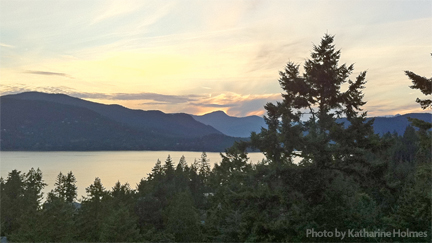Geography
 British Columbia is a stunning place that encapsulates most people’s image of Canada. The mountains and vast forested interior of the coast seem infinite. Ancient forests, ranching country, supernatural secluded lakes, and Pacific Ocean views are the essential ingredients of a visit to British Columbia. It is the farthest west province in Canada and one of North America’s most mountainous regions. BC is bordered by Alberta, the Yukon Territory and several U.S. states, including Alaska.
British Columbia is a stunning place that encapsulates most people’s image of Canada. The mountains and vast forested interior of the coast seem infinite. Ancient forests, ranching country, supernatural secluded lakes, and Pacific Ocean views are the essential ingredients of a visit to British Columbia. It is the farthest west province in Canada and one of North America’s most mountainous regions. BC is bordered by Alberta, the Yukon Territory and several U.S. states, including Alaska.
Climate
British Columbia contains Canada’s wettest climates, and some of its driest. There are more species of flora and fauna than the rest of the country put together. The province’s climate equals its topography for variety. For example, the mild coastal region receives abundant precipitation – from 130 to 380 cm of rain a year – while the interior has a continental climate. Other parts of the province are almost desert-like, with very hot summers followed by very cold winters.
Culture
British Columbia’s beauty is a huge draw: 40,000 persons settle there each year, and its population is now over 3.8 million – 12 percent of Canada’s total. More than half of this population live in the Greater Victoria and Vancouver areas. Vancouver is home to more than 1.8 million people. It is the third-largest Canadian city, and a major Pacific port.
Southern British Columbia is very different from the northern half of the province, containing most of the roads, towns and accessible sights. A cosmopolitan, sophisticated place, Vancouver features a combination of glittering skyline and generous open spaces, standing as a model of urban planning.
British Columbia is a perfect place for recreation. Its natural highlights include Canada’s largest ski area, warmest lakes and some of the best beaches, not to mention hot springs and hiking, sailing and canoeing, as well as some of the best salmon fishing in the world. The diverse landscape is one of the main reasons for BC’s distinctiveness.
Industry
Tourism is the most important economic sector. About 15 million people visit British Columbia per year. It boasts almost ten million hectares of parkland visited about 25 million times each year. While the Rocky Mountains is the star attraction, Coastal BC is a more popular destination with beaches, hiking trails, skiing, artists’ colonies, wildlife reserves, whalewatching locales and other attractions. The largest city, Vancouver is popular, but not quite as much as the island capital and number one tourist destination in Canada, Victoria.
Visitors also enjoy Haida Gwaii (formerly the Queen Charlotte Islands), which has a large designation of parkland. The area contains untouched wilderness and unique species of flora. The abandoned Haida village of Ninstints is of such historical and cultural importance that the United Nations has declared it a World Heritage Site.
For many years, forestry was the top industry in British Columbia, and it still ranks a close second to Tourism. Forests cover 56 percent of British Columbia. Conifers from these forests are converted into lumber, newsprint, pulp and paper products, shingles and shakes – about half of the total softwood output of Canada. Other industries such as technology, manufacturing and services are increasing in importance.
